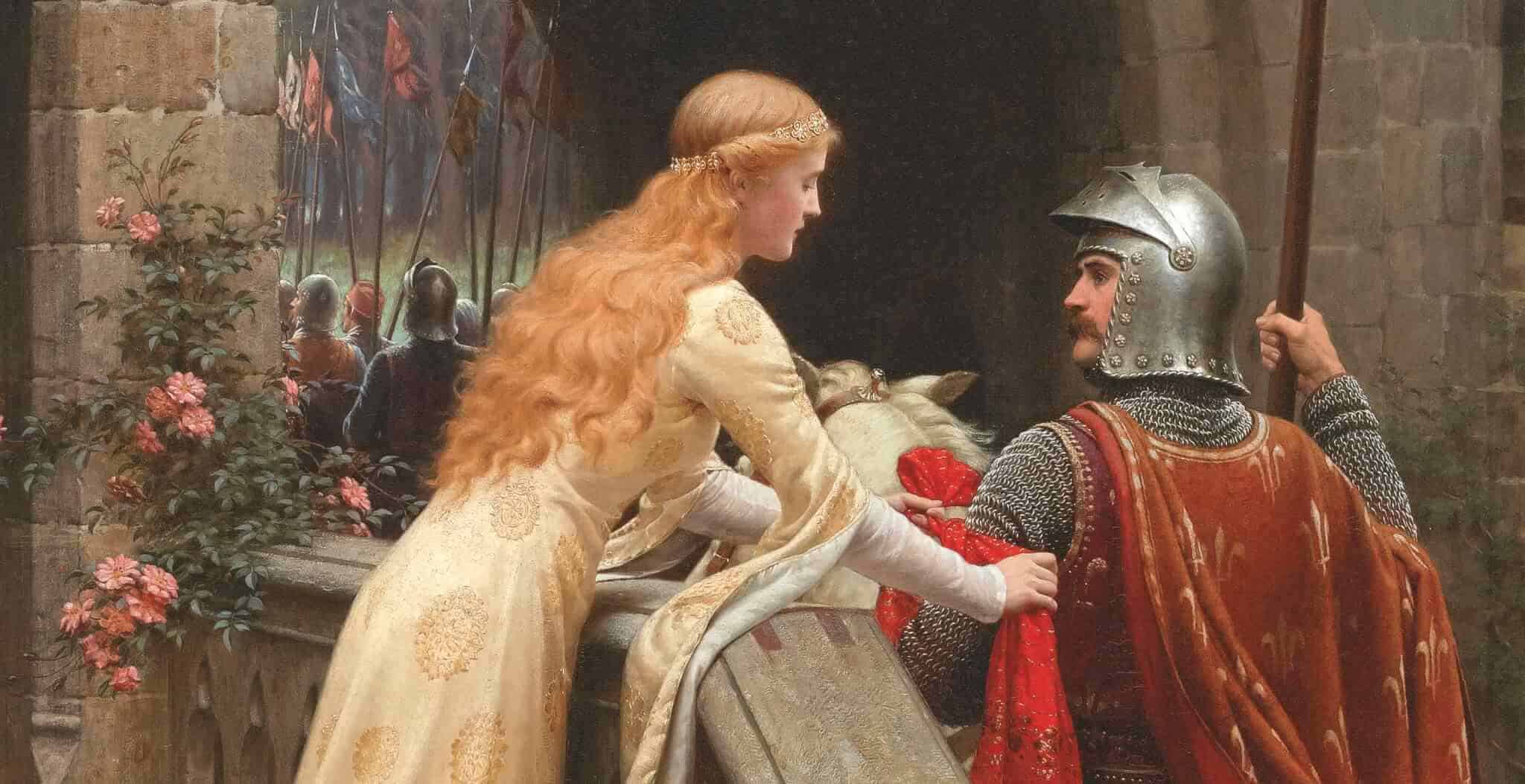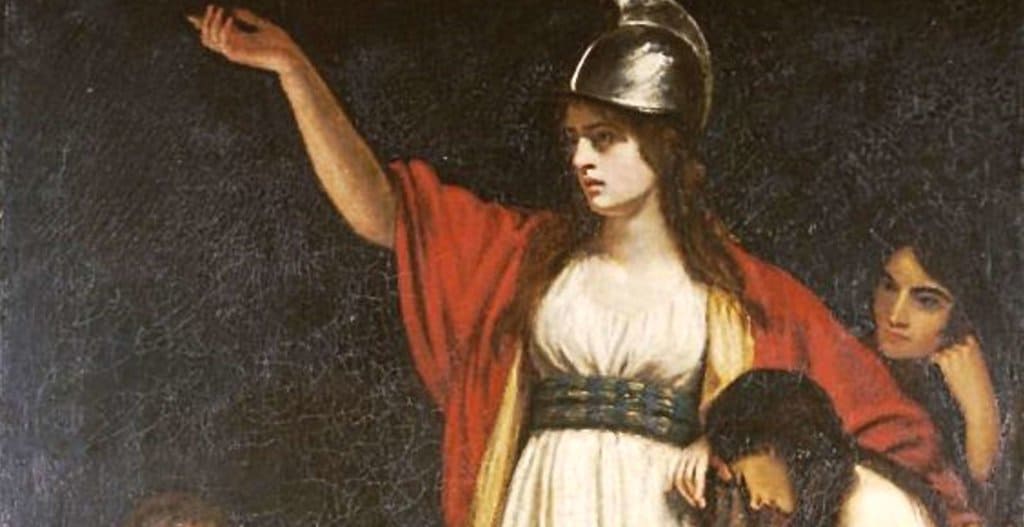Sleep on through shivering spear and brand,
An apple rosy red within thy baby hand;
Thy pillowed cheeks a pair of roses bright,
Thy heart as happy day and night!”
This traditional Welsh lullaby remembers Princess Gwenllian’s bravery, her tragic tale echoed in the verses of Caniad Hun Gwenllian. The lullaby is attributed to Meilyr Brydydd who was the chief bard at the court of the King of Gwynedd, Gruffudd ap Cynan in the early 1100’s.
Gwenllian was a warrior princess, leading an army of Welshmen in 1136 against the mighty Norman forces. Her bravery has made her a beloved figure, revered much like Boudica for her strength and tenacity in the face of great danger.
Sadly her story came to a tragic end; however almost a thousand years later, Gwenllian is still remembered as a heroine in the history books.
Born in 1100 on Ynys Môn, to Gruffudd ap Cynan, Prince of Gwynedd and his wife Angharad, Gwenllian was the youngest child with four older sisters called Susanna, Annest, Mared and Rhiannell, as well as three older brothers called Owain, Cadwaladr and Cadwallon. This large family had prominent lineage and were descendants of Brian Bóruma mac Cennétig, High King of Ireland.
Gwenllian grew to become a great beauty and caught the eye of the Prince of Deheubarth, Gruffydd ap Rhys when he travelled to Gwynedd to meet her father in 1113. The attraction was overwhelming, she was said to not only be very attractive but also educated and intelligent, making her the perfect match for the prince.
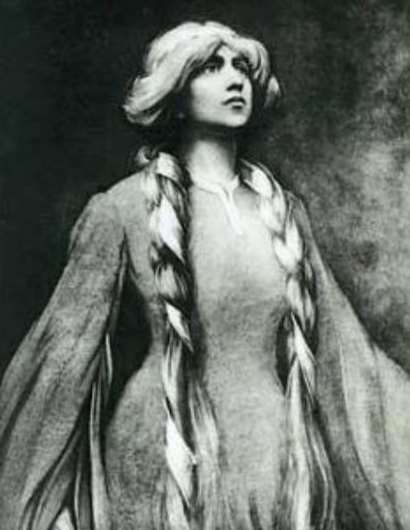
The prince and Gwenllian subsequently eloped: she went to join his family as Princess Consort of Deheubarth. The couple went on to have children, Morgan born in 1116, Maelgwyn who was born three years later and Rhys, born in 1132 in Carmarthenshire.
This was a very turbulent time. Deheubarth was in the midst of a struggle with the incoming English, Norman and Flemish forces gaining a foothold in the south of Wales.
As fighting ensued, the royal couple were forced to flee into the bastion of the mountainous forest area where Gwenllian joined her husband in launching strikes against the invading forces.
From this stronghold, Gwenllian and her husband harassed the Norman, English and French, launching retaliatory strikes on their positions in Deheubarth. As well as attacking the enemy, Gwenllian and Gruffudd also took money and possessions from the foreign forces and redistributed them to the native Welsh.
Much like Robin Hood and Maid Marian, these actions earned them much fame and admiration. Yet their roles were about to become even more important.
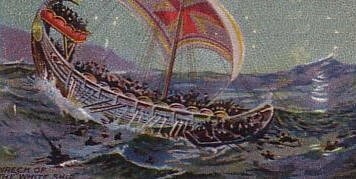
In 1135 King Henry I died. After his death a succession crisis emerged. In 1120 Henry’s rightful heir, his son, William Adelin had drowned in the White Ship disaster. This led Henry to nominate his daughter, the Empress Matilda as his heir. Unfortunately, there were many figures who were keen to prevent this, none more so than Henry’s nephew Stephen of Blois.
Stephen of Blois seized the throne with the help of his brother Henry, Bishop of Winchester. The subsequent civil war that broke out between Stephen and Matilda became known as The Anarchy. Stephen’s reign would long be remembered as a time of rebellion, revolt and conflict not only with Welsh leaders but also English barons and Scottish invaders.
The Welsh took the opportunity of the Anarchy to recover their lands lost to the Marcher lords, men with noble status appointed by the King of England to guard and manage the Welsh border.
The revolt began in South Wales when Hywel ap Mareduddd, Lord of Brycheiniog and his men successfully destroyed the Anglo-Norman forces led by Maurice de Londres, Lord of Kidwelly. The Battle of Llwchwr, also known as the Battle of Gower took place between Loughor and Swansea on New Year’s Day in 1136.
The Normans had underestimated the Welsh forces: they had anticipated a few raiding bands but were shaken to discover an imposing Welsh army which, with the element of surprise, was able to emerge victorious in the battle. The Norman loss was felt keenly with 500 men dead.
This great Welsh victory gave the Welsh the self-belief that they could win and defeat the enemy. Maurice was subsequently driven back to Kidwelly Castle.
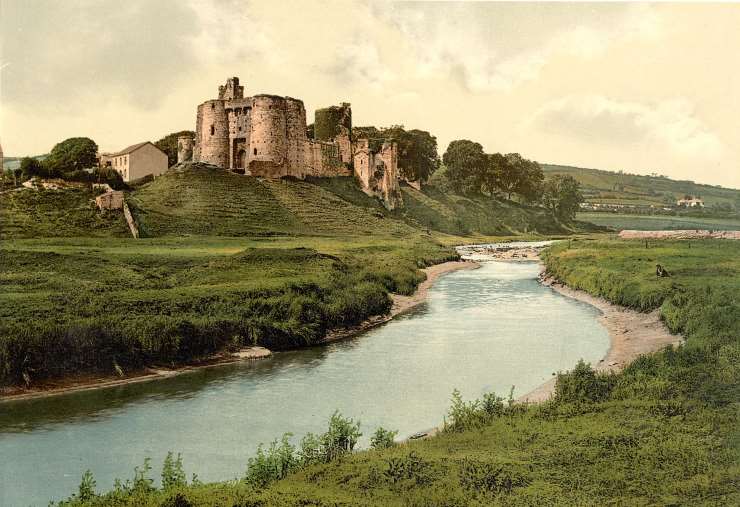
Encouraged by this great victory, Gruffydd ap Rhys, Gwenllian’s husband travelled to Gwynedd to meet with his father-in-law and plan to expel the Norman lords from Wales, for once and for all.
However Maurice, Lord of Kidwelly was far from giving up on his conquest. After suffering military humiliation against the Welsh at Llwchwr, he proceeded to retaliate with several lightning raids against the Welsh in Deheubarth whilst also arranging for fresh reinforcements.
Fortunately, Gwenllian had been advised that Norman troop ships had been seen heading up the Glamorgan coast. With news of this imminent attack, Gwenllian was forced to act quickly. She wasted no time in raising an army for battle. Sadly, the army she was able to gather at short notice was small and poorly equipped. The few hundred men were up against well-armed Anglo-Norman soldiers who were now arriving in large numbers.
Gwenllian decided that the best tactic would be to launch another guerilla style campaign against the Normans. This would buy her time until her husband could return.
Gwenllian decided to divide her troops. She sent some of them to attack the Norman ships, under the watchful eye of a fellow Welsh chieftain, Gruffydd ap Llewellyn. The rest of her men stayed hidden in the woods just north of Kidwelly Castle where they could cut off Maurice’s supply chain.
Sadly for Gwenllian, she was about to become the victim of a most treacherous deed, when she was betrayed by Gruffydd ap Llewellyn who revealed her position. Her fate was sealed.
Despite her small army, she would still have had the element of surprise to help her, but because of Gruffydd ap Llewellyn’s treachery and deceit, this was no longer the case.
Gwenllian and her two eldest sons readied for battle. Gwenllian led her army out of the forest to attack Maurice at Kidwelly Castle. However her small force was routed and during the battle she fell from her horse. In the chaos, her eldest son Morgan attempted to protect his mother but tragically died in the process.
Meanwhile, her other son Maelgwyn watched on in horror as his mother was captured and then beheaded on the battlefield. With one son dead, another captured and Princess Gwenllian slain in cold blood, news of this tragic battle spread quickly.
Gwenllian’s death as leader of the “patriotic revolt” was to have cataclysmic repercussions and inevitably contribute to the Great Revolt of 1136, with the Welsh vowing to seek revenge for her tragic death.
Meanwhile upon hearing the news, Gwenllian’s brothers, her husband and her father retaliated and took on the enemy. Eventually the Prince of Deheubarth was able to reclaim his rightful land and power whilst his youngest son with Gwenllian became Lord Rhys, an important and famous Welsh ruler who went on to make his mark.
Only a year after her execution on the battlefield, her husband Gruffydd passed away, with many claiming that he died of a broken heart. Gwenllian’s legacy would continue to live on in the battle cry of Welsh soldiers: “Revenge for Gwenllian”.
Today, her ghost is said to still haunt the area of Kidwelly Castle and the field where the battle was fought is known as the Field of Gwenllian.
Princess Gwenllian was a warrior, a loyal wife, a brave leader and patriot; her sacrifice was not forgotten.
Ddail Achos Gwenllian!
Revenge for Gwenllian!
Jessica Brain is a freelance writer specialising in history. Based in Kent and a lover of all things historical.
